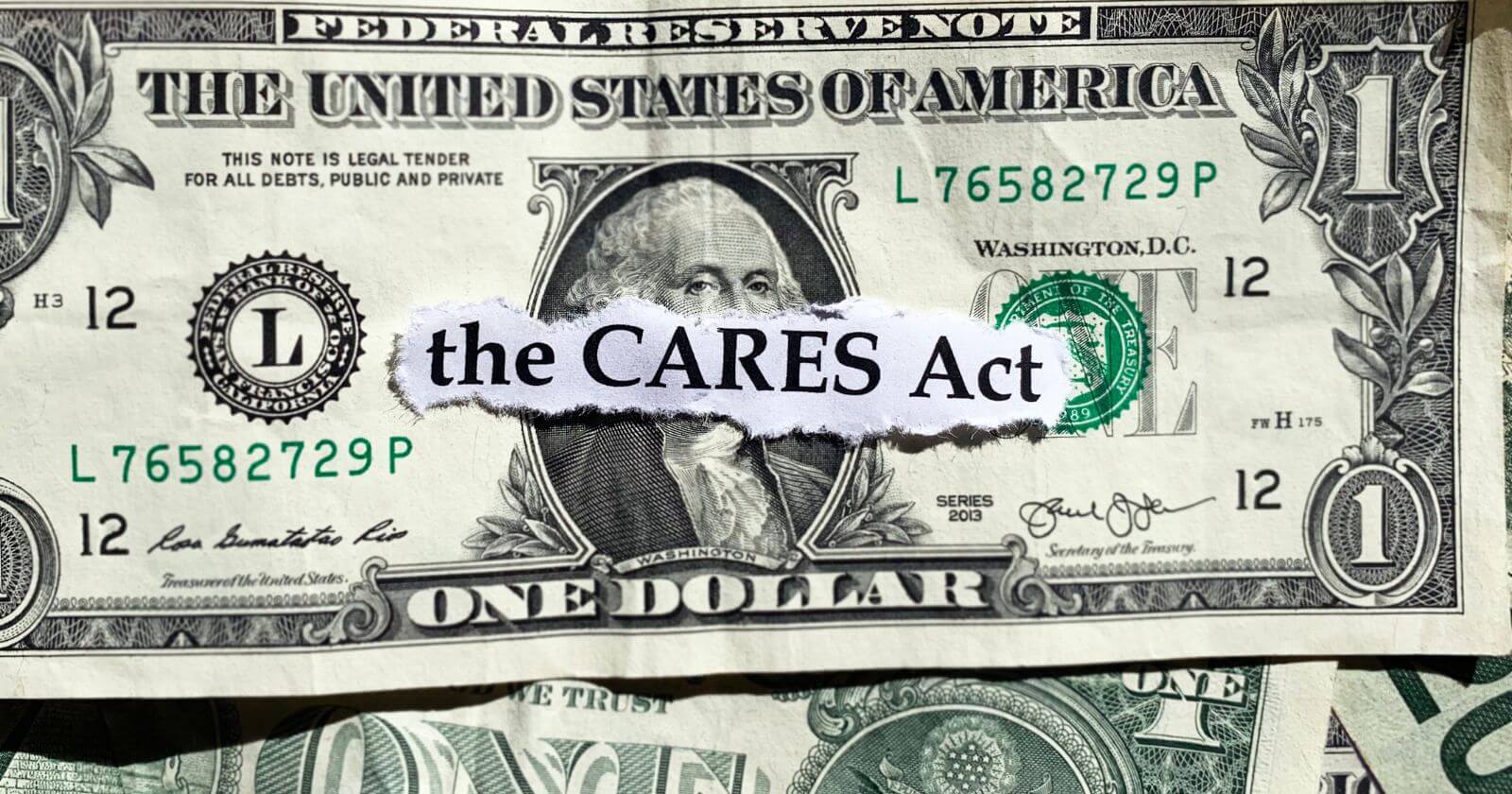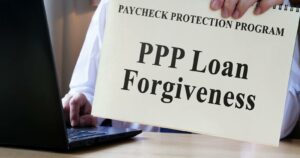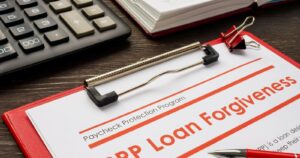Last Updated May 15, 2020 11:20 pm
Congress passed the historic Coronavirus Aid, Relief, and Economic Security Act (CARES Act) and it was signed into law on Friday, March 27, 2020: a $2 trillion stimulus package to aid individuals, families and businesses to survive the economic onslaught of the Coronavirus pandemic.
The pandemic has already wreaked havoc on the stock market- bringing the 11 year old bull streak to a screeching halt, shuttering industries big and small and triggering the highest-ever unemployment claims. All apart from the unprecedented human toll it’s taking.
Congress initially passed the Families First Coronavirus Response Act to aid small businesses and their employees by giving them a generous and expanded Paid Family Leave and Paid Sick Leave and then a payroll tax credit to offset that expense for the businesses.
If you want to move on the Medicare Grants and Advance Payments, read the next post here.
Here, we delve a little bit into the loan provisions in the CARES Act that help small businesses like independent physician practices.
SBA’s Economic Injury Disaster Loans (EIDLs)
The Small Business Administration has always had provision for disaster loans for different reasons, including economic disaster. They are
- Low interest federal loans to help small businesses cope with different kinds of emergencies and natural disasters
- Loans are up to $2 million with terms of 30 years, 3.75% for small business
- with payments deferred for the first 12 months.
Now the CARES Act has earmarked $10 billion to EIDLs. Businesses that have been around at least since January 31, 2020 may qualify. So they are expanded with many of their usual restrictions removed:
- They are now available in all states and territories since the pandemic is a national emergency
- SBA loans, under ordinary circumstances require that you do not qualify for loans from other places. This requirement is now waived. It will be of import when we talk of the next kind of loans available to small businesses (PPP Loans)
- It is much easier to qualify for the loan: a business can be approved based on the applicant’s credit score without tax return being required
- For less than $200,000 loans, no personal guarantee or real estate collateral is required
- Sole proprietors and Independent Contractors are also eligible for the EIDL
- The expanded EIDL loan program runs till the end of the year
- You may not apply for an EIDL if are also applying for the PPP Loan (below).
- If you applied for EIDL between February 15 and April 3, 2020, the outstanding loan amount is added to your PPP loan principal and “refinanced” into it.
When you apply for the EIDL, you may be eligible to receive up to $10,000 in an emergency grant or cash advance within 3 days of applying. This is a change from earlier: here is an SBA official essentially implying $1000 per employee ($10,000 if you have 10 or more employees). This is to tide over expenses while they check whether you qualify. Even if you end up do not qualifying for the EIDL, you DO NOT have to repay the cash advance. However, if you also get a PPP Loan (below), the forgiveness on it is reduced by this $10,000 of cash advance you received.
How to Apply for SBA COVID-19 Economic Disaster Loan
You apply for an Covid-related EIDL directly here at the SBA website. I tried it- it is a very simple online form, asking only for the absolute basics. I went up to page four, took only a few minutes. I did quit before I had to sign and verify since I am not applying for the loan. I do not therefore know how much more is being asked. It asks you to check a box if you want the $10,000 Emergency Grant. They seem serious about making this easy.
It is likely they will need further information once they receive this preliminary information.
Paycheck Protection Program Loan Guarantee
The CARES Act has $350 billion set aside for aid to small businesses in the form of Paycheck Protection Program Loans. Some of the whos, whats and hows:
- Applies to businesses up and running by February 15, 2020.
- Applies to small businesses: with less than 500 employees.
- Independent Contractors and Sole Proprietors can apply based on their net income from self-employment.
- Loan amounts: 250% of average monthly payroll costs (defined later), up to $10 million.
- Loans are administered not directly by the SBA (as for EIDLs) but through partner banks that are approved for SBA7(a) loans. There are almost 2000 of them listed at this time and more are expected to be included, given the likely overwhelming demand.
- Lenders will begin processing loans as early as April 3, 2020 for small businesses and Sole Proprietors and from April 10, 2020 for Independent Contractors and Self-Employed individuals.
- Loans are 100% guaranteed by the Federal government, so lending banks are not at risk
- Processing fees range from 1-5%, based on the size of the loan
Maximum interest rate is 4%, with loan terms of up to 10 years- Repayment term is 2 years, for the unforgiven principal at an interest rate of
0.5%1.0% (changed on April 2nd, with less than 6 hours to go before a midnight launch) - The first payment is deferred for 6-
12months BUT interest continues to accrue - No prepayment penalty
- No personal guarantee or collateral is required
- Borrower eligibility are relaxed
- Part of the loan may be forgivable (more later)
- Loan amount may be used towards payroll expenses (because the big reason for this handout is they want you to keep your employees), mortgage or rent payments, utilities as well as other operating expenses.
- Until April 3, 2020, you could apply for the PPP Loan along with the SBA’s EIDL
- You can apply for other State/local Government assistance, such as bridge loans- as long as they are for covering different expenses.
- The PPP Loan program was scheduled to run up to June 30, 2020 but funding ran out in a couple of days from Round 1.
- Additional funding starts April 27, 2020.
What Payroll Costs include
- Wages/compensation for employees of the business
or independent contractors. For employees who make over $100,000/year, the prorated amount is used. Do not reduce wages for Federal Taxes withheld or Payroll taxes towards employee wages. - It includes expenses towards sick leave, vacation, parental leave and other benefits you provide your employees
- Employer portion of Group Health Insurance premiums for your business
- Retirement benefits contributions for your employees (it is unclear whether retirement benefits can be included if you are self employed- this Payroll Costs Calculator from AICPA seems to suggest not. But there are other interpretations too.
- State and local taxes levied on employee compensation
Any payroll costs that are being covered for you under FFCRA are excluded.
- For self employed/Independent Contractor/Sole Proprietors, use net income (gross income (-) expenses. Health insurance premiums and retirement benefits are NOT included.
Paycheck Protection Program Loan Forgiveness
This has everyone in a tizzy since it is potentially a bigger handout than most of us have ever seen from the Government. The amount of the loan a business uses for the following purposes may be forgiven:
- 8 weeks of payroll expenses- as defined earlier: this must be 75% or greater of the entire forgiven amount
- Mortgage Interest
- Rent and
- Utilities- that were already in place prior to February 15, 2020. Utilities are broadly defined and include not only the usuals- gas, electricity and water, but also phone, internet and transport costs.
Loan amounts outside of these purposes, such as inventory or prior debt obligations, etc are not forgivable.
You need to request your lender for loan forgiveness. Along with the proper documentation that you did indeed keep all your employees and did not cut their pay. As well as proof of mortgage interest/rent and utilities. They are required to make a decision within 60 days.
Forgiven loan amount is not counted as taxable income.
“Taxability.—For purposes of the Internal Revenue Code of 1986, any amount which (but for this subsection) would be includible in gross income of the eligible recipient by reason of forgiveness described in subsection (b) shall be excluded from gross income.”: from this article in Forbes.
Forgiveness amounts are proportionately reduced if you either fire or cut pay by 25% or greater for employees making less than $100,000 per year. So you must keep the same number of employees for the first 8 weeks from the time you get the loan as you did last year from February 15, 2019 to June 30, 2019 (or from January 1, 2020 to February 15, 2020 if you were not in business back in February, 2019).
If you happen to have laid off employees or cut pay from the period beginning February 15,2020 to April 26, 2020, you are eligible for forgiveness if you rehire them or restore their wages before June 30, 2020.
Loan forgiveness per employee is also capped at $100,000/year. Hence, payroll costs towards one employee cannot exceed $15,385 for the 8 weeks.
How to Apply for PPP Loan
- Calculate maximum loan you are eligible for on this spreadsheet from AICPA.
- Here is a sample PPP Loan Application Form from the SBA.gov. You can expect something similar from your lender.
- Documentation requirements include recent Tax Returns, Payroll information, Financial Reports, Business organization with details of owners as well as estimates of impact of the pandemic on your business.
- Apply online at your lender’s website, for most banks
- If your lender is not participating, look for a local SBA-approved Lender.
To Do’s
- Gather your documentation ready to go
- Apply early- rules are changing, money may run out, application delays may (or will) get longer
- Apply with banks you currently have a relationship with, if they are on the list of approved lenders. With the sudden onslaught of loan applications, your application has a better chance of being worked on if you know someone at the bank.
Good Reads
- Emergency Loan Program Plagued by Chaos on eve of launch
- FAQs on CARES Act Loans
- U.S. Senate Committee on Small Business and Entrepreneurship: Paycheck Protection Program FAQs
- Department of Treasury PPP Borrower Information Sheet
- SBA: Paycheck Protection Program
- Paycheck Protection Program- Devilish Details- Some Uncertainty
- Getting Cash for Your Small Business Through the CARES Act
- U.S. Chamber of Commerce: Coronavirus Emergency Loans: Small business Guide and Checklist
- Look here for Documentation Requirements for PPP Loans
I will keep updating this post as things become clearer.
Updates
- Thursday, April 2, 2020: Interest rate on PPP Loan changed again- from 0.5% to 1%
- Independent contractors are not included in a company payroll costs. Those independent contractors/sole proprietors can apply for the loan based on their own net income.
- Processing fees, up to 5% of loan amount, may apply
- It is unclear whether average payroll costs refer to the period from Jan-Dec, 2019 or the current “last 12 months”.
- Thursday, April 2, 2020: Chase Bank, the largest bank in U.S., emails its customers that they will not be rolling out the loan on Friday, April 3 and that they will let clients know by email and on their website as well as Twitter when they start accepting applications.
- Links to SBA’s Interim Final Rule, passed April 2, 2020 and a Payroll Costs Calculator are here.
- Bank Of America’s PPP Application is live here. Please note that not only do you need to have your business account deposited with them, you also need to have a borrower relationship at BoA, like a business credit card or business loan, as of February 15, 2020.
- Bank Of America needs this list of documents for its applicants. It is using “last 12 months” instead of 2019 for calculating average monthly payroll costs. It is also asking borrowers to reduce wages by Federal Income Tax withheld. These are different from the interpretation in this Forbes article.
- For folks whose banks are not participating or not being so responsive, try smaller community banks or Credit unions. Other options are Kabbage, Lendio or Fundera- they work with multiple banks and can match you up with a lender- kind of like a Kayak for banks.
- Fintech giants PayPal, Intuit and Square are now approved to lend for the Paycheck Protection Program loans.
- $349 Billion allocated to the Paycheck Protection Program ran out of funds on April 16, 2020.
- Second round of funding in the amount of $310 Billion passed Congress almost unanimously and was signed by the President April 24.
- Funds will be released April 27, 2020, 9:30 am.
- It is again expected to not last long. Early application and perhaps multiple applications appear to be key.
- Guidelines from AICPA for PPP Application and Forgiveness
- Another Interim Final Rule on May 13 increased PPP Loan amount to include compensation for owners/partners of partnerships.
- SBA and Department of Treasury release PPP Loan Forgiveness Application on May 15, 2020. None of it is a surprise and the clarifications make the calculations pretty clear.
I am not an accountant or lawyer. Please consider this only general information and please double-check with the right professionals for your situation.
Let me know your thoughts! Are you applying for the SBA’s EIDL or the PPP Loan or both? How was your application experience? Thank you for reading.





